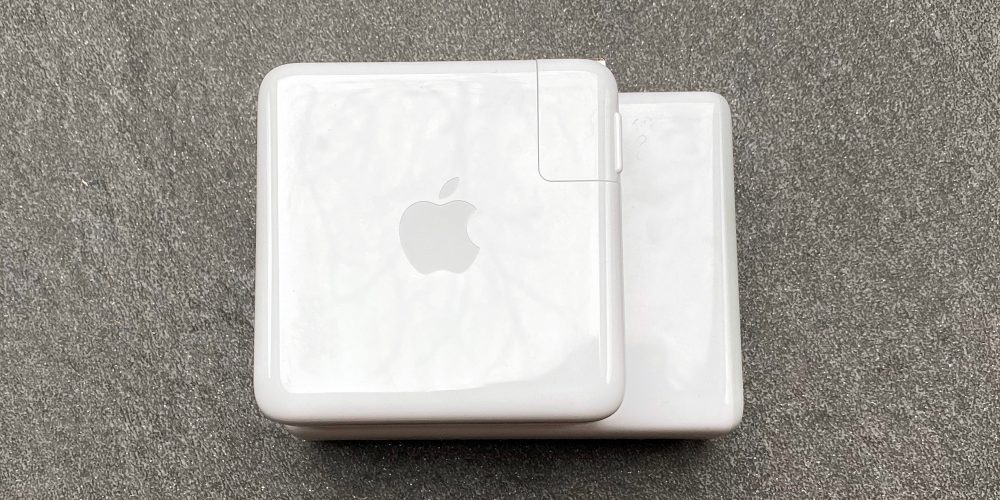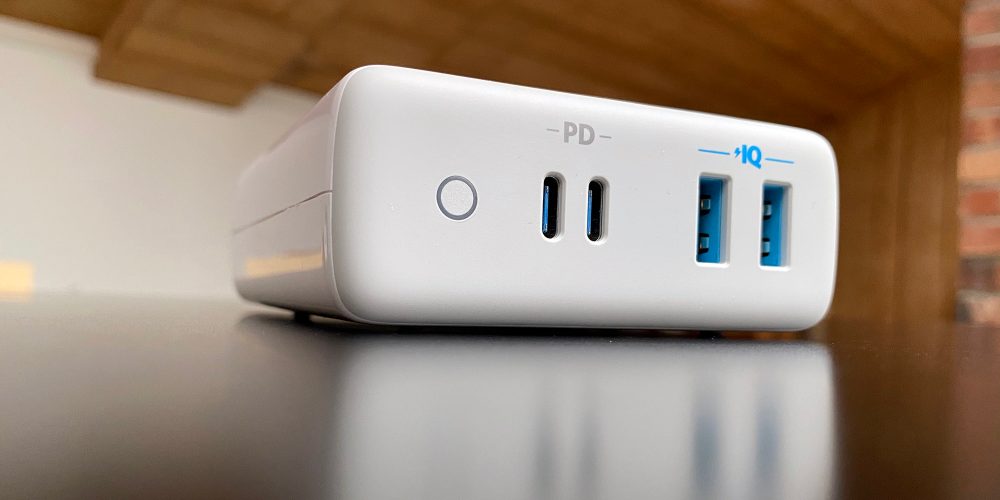Review: Anker’s 100W PowerPort Atom PD 4 desktop charger is a 2020 essential
Anker recently introduced its new PowerPort Atom PD 4 its latest desktop charger that pushes 100W of power across two USB-C and two USB-A ports. Just a few years ago, this type of power supply was mostly uncalled for, but throughout 2019, it became apparent that more juice was required for most modern setups. Apple, in particular, sets this standard by shipping a 96W USB-C wall charger with its 16-inch MacBook Pro. I’ll dive into the value proposition later, but it’s clear that Anker’s new PowerPort Atom PD 4 deserves your attention if you need a secondary charging solution. Full hands-on details below.
PowerPort Atom PD 4 | Specs, more
Anker’s new PowerPort Atom PD 4 arrives with a mostly familiar design, with a white casing, AC power cable, and the usual blue LED ring found on the brand’s chargers. The front reveals a stack of four ports, including two of Anker’s PowerIQ USB-A and two with USB-C PD.
Aside from branding and cabled design, there are few complaints to be had here in terms of this charger’s visuals. Overall, it fits in nicely with my Apple-centric setup. Certainly better than some of the uglier alternatives out there on the market today.
Here’s a full breakdown of the PowerPort Atom PD 4 specs:
- Super Power – Provides an enormous 100W of charging power – enough to charge 2 USB-C laptops and two smartphones at the same time.
- High-Speed Charging – Save up to 1 hour of charging time with USB-C Power Delivery and Anker’s world-famous PowerIQ technology for USB-A.
- Universal Compatibility – Optimized for flawless performance with USB-A and USB-C phones, tablets, laptops, and more, including the 16-inch MacBook Pro, 2018 MacBook Air, and 13-inch Dell XPS.
- Intelligent Power Allocation – Provides up to 100W of charging power while one device is connected to a USB-C port, or distributes output to up to 4 connected devices.
Hands-on with Anker’s 100W powerhouse
I’d venture to guess that most of our readers are frequently rocking multiple devices at the same time. Likely some sort of combination between an iPhone, iPad, and MacBook. Depending on when these devices were purchased, the value of Anker’s PowerPort Atom PD 4 becomes all the more apparent.
For my use case, that’s an iPhone 11 Pro, 16-inch MacBook Pro, and 12.9-inch iPad Pro. Three devices that like to consume power, and take longer than their predecessors to charge up.
This is the primary selling point of the PowerPort Atom PD 4. It handles Apple’s three flagship devices beautifully, with one port left over for any other auxiliary electronics that may need to be juiced up.
In my testing, and iPhone 11 Pro powered up in under an hour. iPad Pro? 90 minutes. And my 16-inch MacBook Pro in about two hours and 15 minutes. All of which beat the standard charging times when compared to Apple’s bundled power bricks. Of course, these times will vary if all ports are in-use.
I have a relatively dedicated daily routine, which combines a clamshell desk setup for my MacBook and wireless charging for my iPhone 11 Pro. My iPad Pro is regularly used by my wife and daughter, so charging there varies. Because of that, the Anker PowerPort Atom PD 4 falls into my routine beautifully for travel. If I’m going anywhere, I’m taking this Anker charger with me.
It’s roughly the same size as Apple’s 96W wall charger but delivers three more ports and great flexibility with both USB-C and A. The required AC power cable will be a drawback for some, as will the $100 price tag.
My argument is that for a few trade-offs, Anker delivers a far superior product when put up against Apple’s own in-house power solutions. The $20 upcharge in comparison to the 96W wall chargerworth it, as far as I’m concerned. And we can about guarantee that Anker will be putting its PowerPort Atom PD 4 on sale at some point, delivering even further value at that time.
Conclusion
The new Anker PowerPort Atom PD 4 is a natural fit if you’re a multi-device user. With USB-C and A functionality, up to 100W of power, and a reasonably compact design, it delivers everything needed to charge up most modern setups. I highly recommend considering going this route, especially if you’re a 16-inch MacBook Pro user.
Reference - 9to5toys.com









 saves a lot of space on work desk
saves a lot of space on work desk